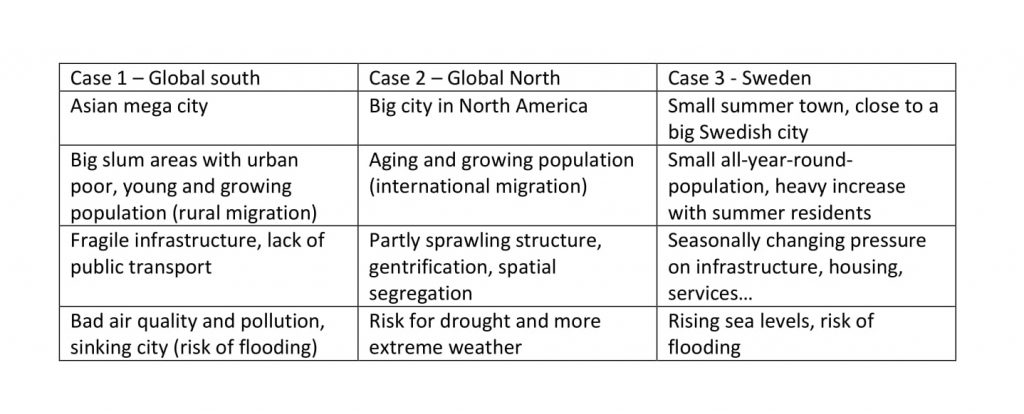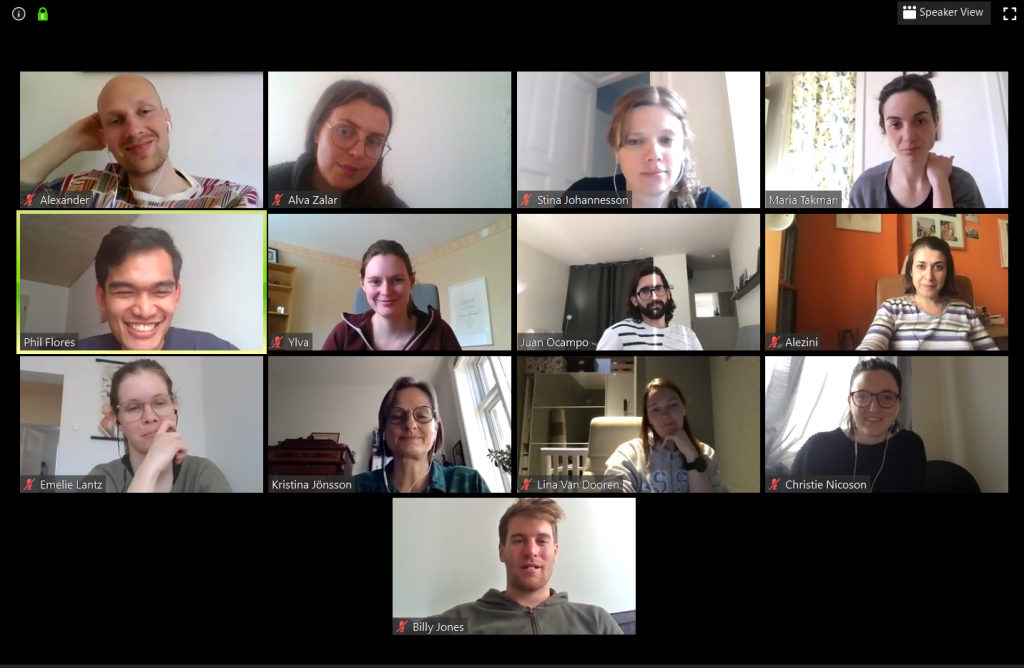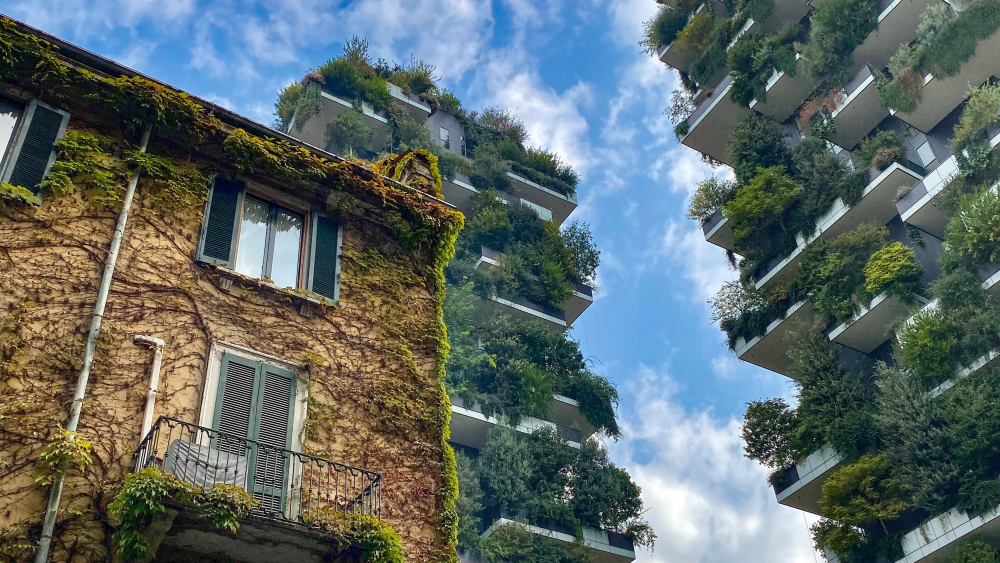Posted on 15 May 2020 by Alva Zalar, Maria Takman and Phil Justice Flores.
The views expressed in this publication are those of the authors and do not necessarily represent those of the Agenda 2030 Graduate School or Lund University. The present document is being issued without formal editing.
This blog post is based on a seminar on sustainable urbanization, arranged for the core group of the Agenda 2030 graduate school. Three cases were used as basis for the discussion (figure 1), and for each case, the following questions were asked: (1) What are the biggest challenges with urbanization? (2) How do we achieve sustainable urbanization? (3) Do you see any conflicts or synergies between different interests when striving for sustainable urbanization?

Discovering interdependencies
The discussions from all three groups made visible all kinds of factors, reflecting our variety in expertise and perspective. Some factors were purely technical, such as how old piping systems in the growing city in North America could cope up with the pressure from increased usage. Other factors targeted were social issues, such as the spatial segregation caused by the elite building gated communities fenced off from the slum areas in case 1 focusing on global south. The differentiated set of, seemingly unrelated, issues sometimes made the setting seem impossibly complex.
Although, when we took a closer look at these factors, we were able to find interdependencies between seemingly unrelated perspectives. For instance, the increased demands for mobility (e.g. in case 3 about the summer city in Sweden) within and beyond regions, create a pressure to expand the infrastructure in an energy efficient way, but also to find mobility solutions that are accessible for all segments of the population. If we allow “sustainable heterotopias”[1], for example discussed as gated communities in the global south-case, we cannot look past effects such as waste and sewage pipes leading straight to the slum areas, seriously adventuring the already troubling sanitary standards. We need to address the issues of sustainability, not just transfer problems to marginalized places and people.
The main challenge thus lies within the question we asked – to create synergies, we also need to identify conflicts. The city is a complex system that cannot be broken into “islands of sustainability”. Social matters must be attended if technical solutions ought to be well-functioning, and vice versa. The group discussing case 2, global north, stated that “the level of environmental awareness goes down the rougher conditions you live in. Where there is no stable electricity, people will not care about environmental concerns”.
Suggesting solutions
So, which solutions were discussed? All three groups engaged with the topic of equitable blue-green structures, increasing urban green elements. Nature contributes to basic needs such as the air we breathe and the food we eat but is rarely prioritized. Green elements provide environmental and social benefits, and these benefits need to favour all parts of the city and all segments of the population. The discussion about the green city must relate to matters such as urban design and urban economy; how do we balance the potential conflict between densification and greenery? Who benefits from this greenery and how could we make a joint venture to care for it?
The second dominating solution discussed was inclusivity and participation. Governmental approaches and politics undoubtedly are a crucial part of the urban construction, therefore more people need to access democratic governance through inclusive participation. Group 1, focusing on global south, stated that “the political system is the basis of the sustainable city. We need regulation to become environmentally and socially sustainable – although the challenge does not lie within achieving regulation but to establish these changes and get acceptance of them”.
Finding the pathway towards sustainable urbanization includes asking ourselves the question: in what kind of society do we want to live? It is a complex question and a complex theme that greatly benefitted from the interdisciplinary discussion that happened during the seminar. Each person in the group brought their own expertise and interest to the table, which made challenges and conflicts visible. Doing it together, not only within academia but also with the civil society, government and policy, might be the only way to do it.

[1] Heterotopia is a concept developed by Foucualt but used by many. We use it in this text to conceptualize discursive places of transformative potential, separate spaces of ‘otherness’ within a lifeworld.

